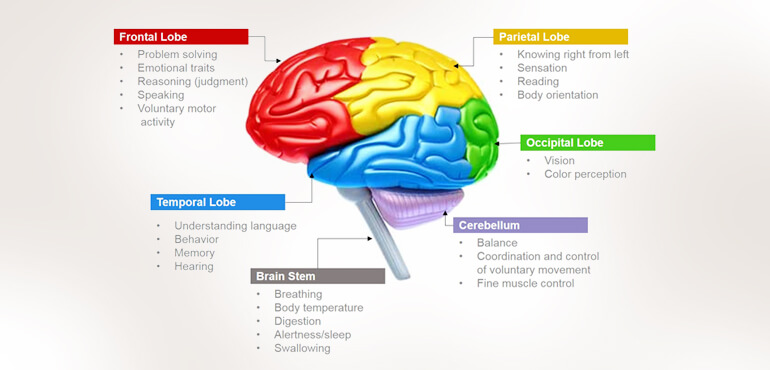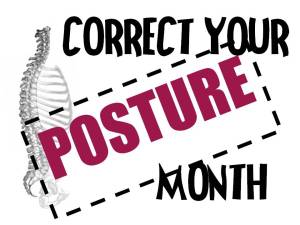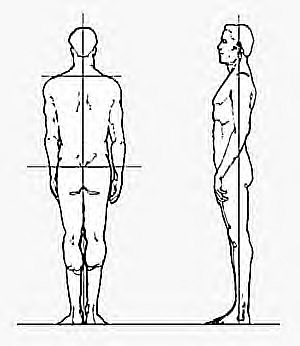Sharing a little about osteoarthritis today!! Some references use terms such as arthritis, osteoarthritis (OA), degenerative arthritis, degenerative joint disease (DJD) or osteoarthrosis. Depending on which specialty doctor you consult, there may be some variation in these disorders, but for the simplicity of our purposes we are talking about the same thing – inflammation of a joint. OA is the most common form of joint inflammation, commonly leading to degeneration of the joint over time in the absence of diagnosis and proper care.
 Osteoarthritis is characterized by:
Osteoarthritis is characterized by:
-
mild, early-morning stiffness
-
stiffness following periods of rest
-
pain that worsens on joint use
-
loss of joint function
-
local tenderness
-
soft tissue and/or bony swelling
-
joint crepitus
-
restricted mobility
-
X-Ray findings of narrowed joint space, cartilage erosion, bone spurs, etc.

I have suggested the article on Osteoarthritis out of the
Encyclopedia of Natural Medicine by Michael Murray, ND and Joseph Pizzorno, ND on countless occassions for patients at the office and for casual conversations away from the office. I would like to share a little from the cover about the doctors, then a few excerpts, and conclude with just a few extras about joint inflammation.
Dr. Murray is a naturopath and leading researcher in the field of natural medicine. He is a faculty member of Seattle’s Bastyr University, one of the world’s foremost institutions of naturopathic learning. In addition, Dr. Murray maintains a private practice and has authored over 20 books.
Dr. Pizzorno is a prominent naturopath physician, researcher and educator, along with the founding president of Bastyr University. He is also the author of Total Wellness (Prima).
WHAT IS NATUROPATHIC MEDICINE?
As defined at naturopathic.org: Naturopathic medicine is based on the belief that the human body has an innate healing ability. Naturopathic doctors (NDs) teach their patients to use diet, exercise, lifestyle changes and cutting edge natural therapies to enhance their bodies’ ability to ward off and combat disease. Naturopathic physicians craft comprehensive treatment plans that blend the best of modern medical science and traditional natural medical approaches to not only treat disease, but to also restore health.
SOME INTERESTING EXCERPTS
Weight-baring joints are more often affected – knees, hips and spine.
Osteoarthritis is divided into 2 categories: primary and secondary. In Primary OA, the degenerative “wear and tear” process occurs after the fifth and sixth decades of life, with no apparent predisposing abnormalities. Secondary OA is associated with some predisposing factor that is responsible for the degenerative changes (ie inherited abnormalities, trauma, previous inflammatory disease).
Onset can be subtle. Morning joint stiffness is commonly the first symptom. As the disease progresses, there is pain on motion of the involved joint that is made worse by prolonged activity and relieved by rest. There are usually NO SIGNS OF INFLAMMATION.
One of the most interesting clinical features of OA is the lack of coorelation between severity of OA (determined by degenerative changes on XRay) and the degree of pain.
Depression and anxiety appear to increase the experience of the pain of OA.
Some of the side effects of aspirin and nonsteroidal anti-inflammatory drugs (NSAIDs) – such as ibuprofen (Motrin, Nuprin, Advil), piroxicam (Feldene), diclofenac (Voltaren), fenoprofen (Nalfon), indomethacin (Indocin), naproxen (Naprosyn), tolmetin (Tolectin), and sulindac (Clinoril) – are well-known: gastrointestinal upset, ulcer formation, headaches, dizziness, etc. A less well-known side effect is FURTHER DEGENERATION OF THE JOINT CARTILAGE. Experimental studies have shown that aspirin and other NSAIDs inhibit cartilage synthesis and accelerate cartilage destruction. Clinical studies have also shown that NSAID use is associated with acceleration of osteoarthritis and increased joint destruction.
There is a considerable amont of evidence that hormonal forces may initiate or accelerate the development of OA……tamoxifen (an ANTI-estrogen drug) relieves it by decreasing erosion of the cartilage…..compounds containing phytoestrogen activity are capable of binding to estrogen receptors and acting as estrogen antagonists…..perhaps the best way to increase the intake of phytoestrogens is to increase the intake of food sources of phytoestrogens (fennel, celery, parsley, nuts, whole grains and apples).
Norman Childers popularized a diet that treated OA by eliminating nightshade vegetables such as tomatoes, potatoes, eggplant, peppers and tobacco.
The Framingham Osteoarthritis Cohort Study indicates that a high intake of antioxidant nutrients, especially Vitamin C, may reduce the risk of cartilage loss and inhibit progression of the disease in people who have OA….Both Vitamin E and C appear to enhance the stability of sulfated proteoglycans in the complex structure comprising articular cartilage.
Botanicals such as bromelain, curcumin and ginger have anti-inflammatory effects that can be helpful in the management of OA.
Boswellic acid extracts have demonstrated anti-arthritic effects in a variety of trials.
Glucosamine sulfate (Gs) promotes cartilage synthesis. Gs was significantly more effective than the placebo in improving pain and movement after only four weeks of use…..the longer glucosamine sulfate is used, the more obvious the therapeutic benefit. Double blind studies have shown that Gs produces better long-term results than NSAIDs in relieving pain and inflammation of OA…..Gs not only relieves the symptoms, including pain, it also helps the body repair damaged joints (note: obesity reduces the effectiveness of Gs; higher dosages may be required for obese patients)
Dr. William Kaufman, and later Dr. Abram Hoffer, reported very good clinical results in the treatment of hundreds of patients with RA and OA using high-dose niacinamide….research was later conducted that demonstrated niacinamide produced a 29% improvement in pain, range of motion and flexibility as compared to a 10% worsening in the placebo group. (note: high doses of niacinamide can result in significant side effects and should only be used under strict physician supervision)
Nonpharmacological approaches to pain in OA:
- Acupuncture
- Exercise
- Weight loss
- Laser therapy
- Massage
- Ultrasound
- Psychological aids
- They forgot chiropractic in this list 😦
If you consult the Encyclopedia of Natural Medicine you will find many more of the details in this article, including a treatment summary with suggested doseages. It is a really neat book to have in your library anyhow; lots of valueable information with research-backed credibility.
DR. TARYN’S COMMENTS:
So, I must start with how chiropractic care can aid in the management and/or resolution of osteoarthritis! Drs. Murray and Pizzorno mention adding chiropractic care in their treatment summary. I would recommend a chiropractic evaluation to anyone…wait, EVERYone who has been diagnosed with osteoarthritis or who has the related symptoms!!
RESEARCH SAYS
The journal, Annals of Internal Medicine, reported that an 63% of patients seeing a rheumatologist for rheumatoid arthritis, osteoarthritis, and fibromyalgia, sought out some type of complementary care and alternative medicine (CAM). Of these individuals, a full 31% visited a chiropractor at least one time. More importantly, 73% of the individuals with arthritis that did seek a chiropractor’s help found chiropractic therapy helpful. In another report, the US Agency for Health Care Policy and Research stated that chiropractic care is helpful in overcoming acute back pain.
IT’S THE NATURAL CHOICE
The whole basis of chiropractic is the adjustment. The chiropractic adjustment can be applied to any joint in the body. Chiropractors learn various techniques that prepare them to evaluate and adjust the spine as well as extremities (ankle, knee, wrist, elbow, shoulder, jaw).
As I mentioned earlier, OA primarily affects the weight-baring joints. Weight-baring joints are influenced by physical, chemical and emotional stress just like any other joint. There is a noteable difference in the physical stress of these joints though – gravity! Weight-baring joints are impacted by gravity making posture, gait, footwear, sitting/standing/walking surfaces, objects in back pockets when seated (wallet, phone, etc), number of hours/day in prolonged weight-baring postures, and many other factors are very significant in the development of not only the inflammatory process, but especially the long-term degenerative process.
This is extra important so let me say this again, differently. Some resources say that 80% of people over the age of 50 have osteoarthritis. So lets take a male who is 53 years old for example. Consider the “wear and tear” on his spine, particularly the weight-baring joints, given the following:
- 30 lbs overweight
- asymmetric posture – forward head carriage, slumped shoulders and chest
- shoes that are worn on the soles and the arch support is broken down
- carries his wallet (approximately 2″ thick) in his back, right pocket
- 25 minute commute each way to work (sitting on his wallet)
- high stress (bills, deadlines, illness in the family, etc) + high blood pressure
- when he walks, his left foot flares out and his right tracks straight ahead
- occupation requires him to stand, stoop and squat on a concrete surface for 8 hours/day, 5 days/week
- average American diet with minimal water intake
- limited quality sleep
- not currently exercising
- consumes occassional alcohol and infrequently smokes cigarettes
As you picture this gentleman, try to picture the stress that his spine is under on a daily basis. Since this picture typically starts in the early part of the 2nd decade for many people, it is no wonder 80% of people over the age of 50 have inflammation eating away at their joints and causing daily pain and discomfort; maybe 30 years of abuse is the statistical limit! I’m being sarcastic, but you can probably relate to this scenario or know someone who can. Independently, few of these things are trouble-makers, but when you combine their power on a daily basis – the level of stress accumulates quite quickly! Chiropractors lovingly work to relieve the stress caused by daily living!
ANOTHER HELPFUL TOOL
Omega Fatty Acids are absolutely essential in the case of osteoarthritis!! I truely do my best to recommend quality fish oil to all of my patients as a pro-active approach to the daily stresses causing molecular levels of inflammation in all of us! This is just an exponential need in the OA patients!
The University of Maryland Medical Center’s website shares the following: research shows that omega-3 fatty acids reduce inflammation and may help lower risk of chronic diseases such as heart disease, cancer, and arthritis. Omega-3 fatty acids are highly concentrated in the brain and appear to be important for cognitive (brain memory and performance) and behavioral function. In fact, infants who do not get enough omega-3 fatty acids from their mothers during pregnancy are at risk for developing vision and nerve problems. Symptoms of omega-3 fatty acid deficiency include fatigue, poor memory, dry skin, heart problems, mood swings or depression, and poor circulation.
Read more: http://www.umm.edu/altmed/articles/omega-3-000316.htm/#ixzz21sWMX163
Arthritistoday.org has a straightforward article on the benefits of omega 3s in the fights against OA symptoms: http://www.arthritistoday.org/nutrition-and-weight-loss/healthy-eating/food-and-inflammation/fatty-acids-benefits.php
Dr. Chestnut, founder and CEO of Innate Choice, is always a great resource on quality fish oil intake!!! http://www.innatechoice.com/omegasufficiency.cfm
KEEP MOVIN’
 Exercise and motion in general is going to be important to keeping your joints healthy! There are so many organizations that are creating programs to incorporate fitness into your life – join one! You can make new friends and connect with old ones by working out together. If you choose to START a work-out regiment, you might consider consulting a personal trainer or healthcare professional about some of the types of exercise that might best suit your goals. I find myself recommending yoga quite often. There are several different types of yoga so do your homework before joining a class. Once you find a good fit for your pace and needs, you will find there are a lot of physiological, psychological and biomechanical benefits! This website has a LOT of reasons why yoga is a great choice for your work-out regimen:
Exercise and motion in general is going to be important to keeping your joints healthy! There are so many organizations that are creating programs to incorporate fitness into your life – join one! You can make new friends and connect with old ones by working out together. If you choose to START a work-out regiment, you might consider consulting a personal trainer or healthcare professional about some of the types of exercise that might best suit your goals. I find myself recommending yoga quite often. There are several different types of yoga so do your homework before joining a class. Once you find a good fit for your pace and needs, you will find there are a lot of physiological, psychological and biomechanical benefits! This website has a LOT of reasons why yoga is a great choice for your work-out regimen:
http://www.abc-of-yoga.com/beginnersguide/yogabenefits.asp
LAST BUT NOT LEAST
Ice, water and rest! Never underestimate the power of these 3 power-packers!! Most often my patients report that they have used heat, heat and then some more heat. Heat is usually within reach and just sounds good for most achy joints (including the spine). Unfortunately, heat accelerates inflammation. In the case of chronic inflammation, ice therapy will be much more productive!
 Water…need I say more! Most often patients are just shy of ashamed to admit how little water they consume (Dad, are you reading this!! LOL!) I am convinced it is a learned behavior. Arthur Guyton’s Textbook of Medical Physiology states that “the total amount of water in a man of average weight (70 kilograms) is approximately 40 litres, averaging 57 percent of his total body weight; In a newborn infant, this may be as high as 79 percent of the body weight, but it progressively decreases from birth to old age, most of the decrease occurring during the first 10 years of life. Also, obesity decreases the percentage of water in the body, sometimes to as low as 45 percent. Considering your body is 57% water, maybe try consuming 57% of your daily intake in water!! WOW! I can see the look I would get with that one 🙂 Sincerely, you should slowly increase your daily water consumption to meet 1/2 of your body weight in ounces per day. For each additional serving of non-water you drink, add the equivalent in ounces to your base intake of water.
Water…need I say more! Most often patients are just shy of ashamed to admit how little water they consume (Dad, are you reading this!! LOL!) I am convinced it is a learned behavior. Arthur Guyton’s Textbook of Medical Physiology states that “the total amount of water in a man of average weight (70 kilograms) is approximately 40 litres, averaging 57 percent of his total body weight; In a newborn infant, this may be as high as 79 percent of the body weight, but it progressively decreases from birth to old age, most of the decrease occurring during the first 10 years of life. Also, obesity decreases the percentage of water in the body, sometimes to as low as 45 percent. Considering your body is 57% water, maybe try consuming 57% of your daily intake in water!! WOW! I can see the look I would get with that one 🙂 Sincerely, you should slowly increase your daily water consumption to meet 1/2 of your body weight in ounces per day. For each additional serving of non-water you drink, add the equivalent in ounces to your base intake of water.
Finally, rest. Don’t we all need more of this! We learned in chiropractic college that your body can never recover lost rest. Personally, I really enjoy “catching up” on my sleep, but I suppose it is in my head 🙂
Inflammation, just like in the famous case of tendonitis, requires rest! As best you can, try to get 8 – 10 hours of sleep per night and take naps when your body prompts you. You heal more efficiently when you are sleeping and it gets rid of the bags under your eyes!! Just making sure you are invested in this….everyone likes to look at less baggage 🙂
As you can tell, I have had fun sharing this information with you. I hope that in the light of all the depressing-ness of this topic, you have found hope in the various treatments that all show successful! Osteoarthritis is a complicated diagnosis due to the complexity of the body’s awesome design and ability to self-heal! Have faith in your body’s innate power, give it the tools that you decide (hopefully with the help of a healthcare professional – wholistic or otherwise) will help it to heal, and then let it HEAL!! Be prepared to thrive and celebrate the feeling of motion and life!!
Be blessed in every way! In loving service,
Dr. Taryn Lowery



 Halcyon is a type of bird. It is referenced in
Halcyon is a type of bird. It is referenced in 









